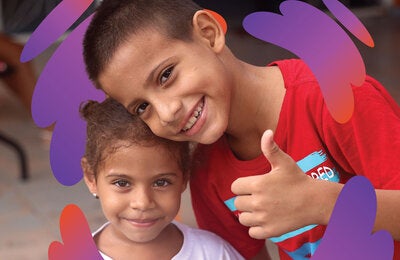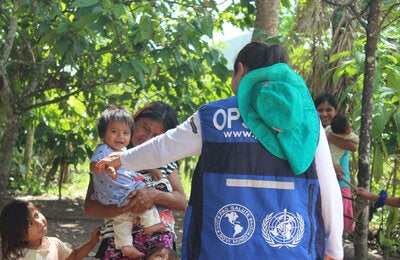
Washington D.C. 4 November, 2022 (PAHO) – As malaria continues to threaten the lives of around 138 million people in the region, in the run up to Malaria Day in the Americas, the Pan American Health Organization (PAHO) calls on countries to focus on local level surveillance and response to tackle the root cause of the disease.
Despite advances towards malaria elimination in the Americas since 2010, overall progress was hampered by a sustained uptick in cases from 2014 to 2019. While cases began to drop again from 2020-2021, the COVID-19 pandemic impacted the malaria response, disrupting testing, surveillance and vector control actions, particularly among rural populations.
“For the Americas to remain on track with malaria elimination, countries must tailor and sustain interventions based on local data and disease trends,” said Dr. Massimo Ghidinelli, Director Ad Interim for Communicable Diseases and Environmental Determinants of Health at PAHO. “Context is everything when it comes to malaria. Broad-brush initiatives fail to take into consideration factors such as rural populations and migration, which are important drivers of the disease.”
The interventions recommended by PAHO include strengthening local surveillance to ensure the development of accurate, disaggregated data on disease trends; tailored malaria prevention methods, such as vector control that target rural, remote and migratory communities in particular; and improved local access to diagnosis and treatment services.
Dr. Ghidinelli highlighted that countries must also work together and across all sectors as malaria is not just a health issue, but one which is also linked to economics, labor and the environment.
“Economic migration from endemic areas is a huge driver of malaria in our region and mosquitoes know no borders,” he said. “Elimination can only be achieved if the Americas consolidate efforts towards achieving the zero-malaria target.”
Malaria in the Americas
Malaria is a life-threatening disease caused by the Plasmodium parasite, which is transmitted via the bite of an infected Anopheles mosquito. The use of insecticide-treated nets at home and indoor spraying of insecticides are some of the recommended preventative measures for those living in malaria-endemic areas. While malaria is curable, if left untreated it can lead to kidney and brain complications, and even death.
In the Americas, 138 million people live in areas at risk of malaria transmission and in 2021 the total number of cases reached 520,000.
Over the last five years, three countries were certified malaria-free by the World Health Organization – Argentina, El Salvador and Paraguay. In 2021, Belize reported zero malaria cases for the third consecutive year, placing the country on track to apply for malaria-free certification. Other countries in the region are expected to achieve elimination by 2025.
While the number of malaria infections reduced during the COVID-19 pandemic, this was in part due to mobility restrictions imposed by countries as part of the recommended public health measures. As these restrictions ease, countries will need to renew their commitment to malaria elimination in order to meet the challenges posed by resumed economic migration in the region.
Malaria Day in the Americas is celebrated each year on November 6 to mark the achievements of countries in the region towards malaria elimination. The theme for 2022 is “Reaching the zero-malaria target.”
In December, PAHO will celebrate 120 years of active work in the field of public health in the Americas.



